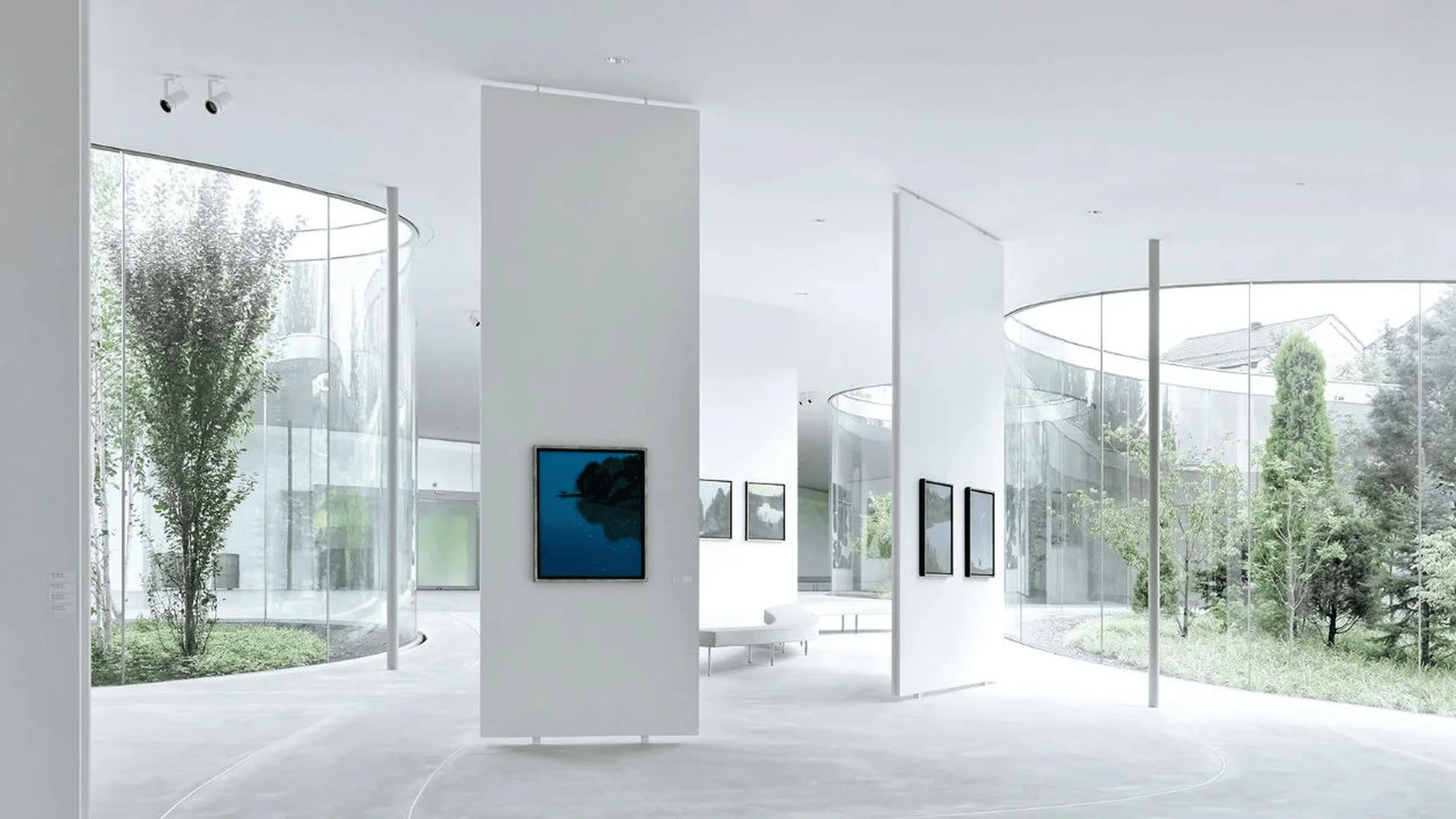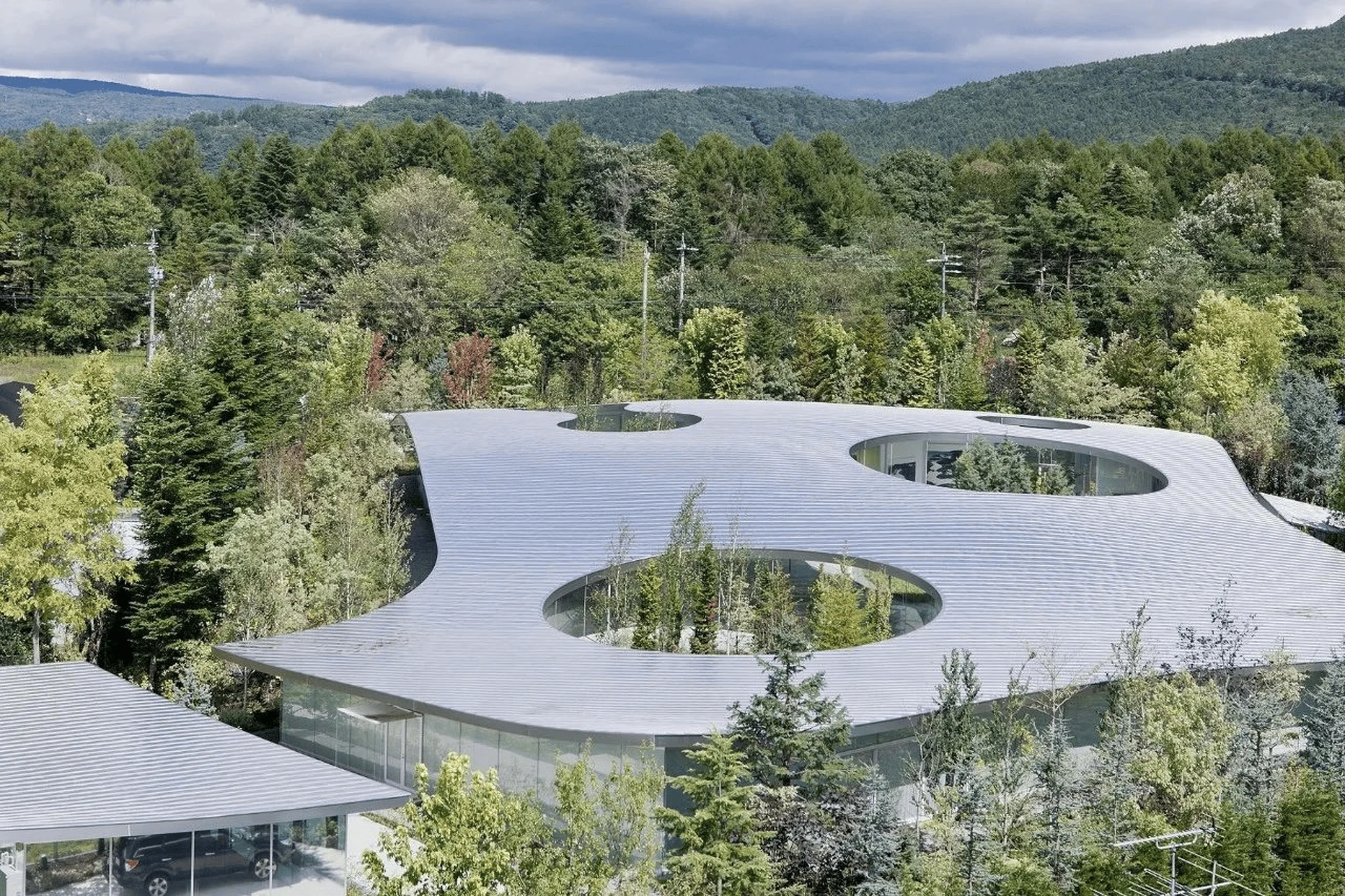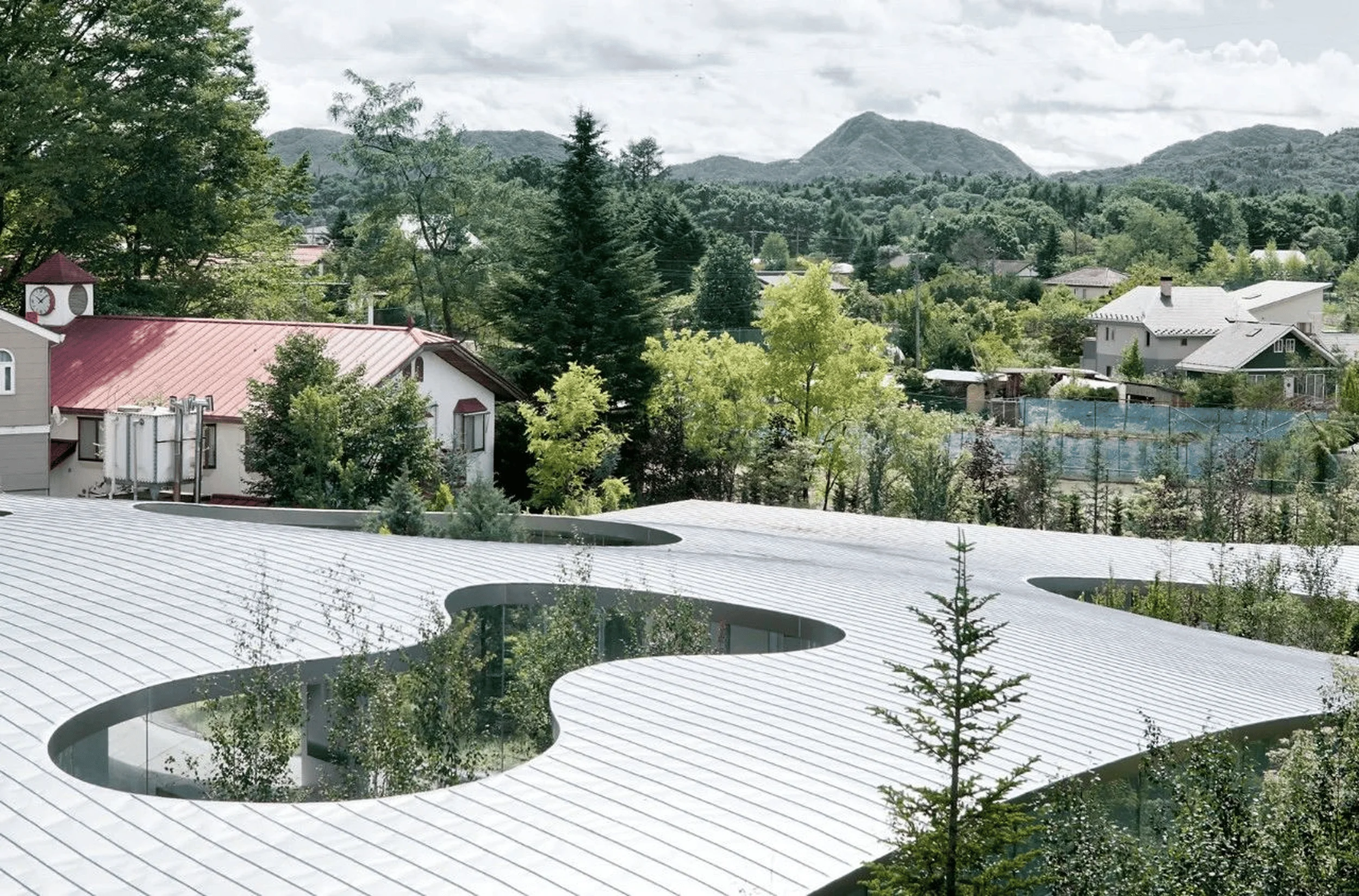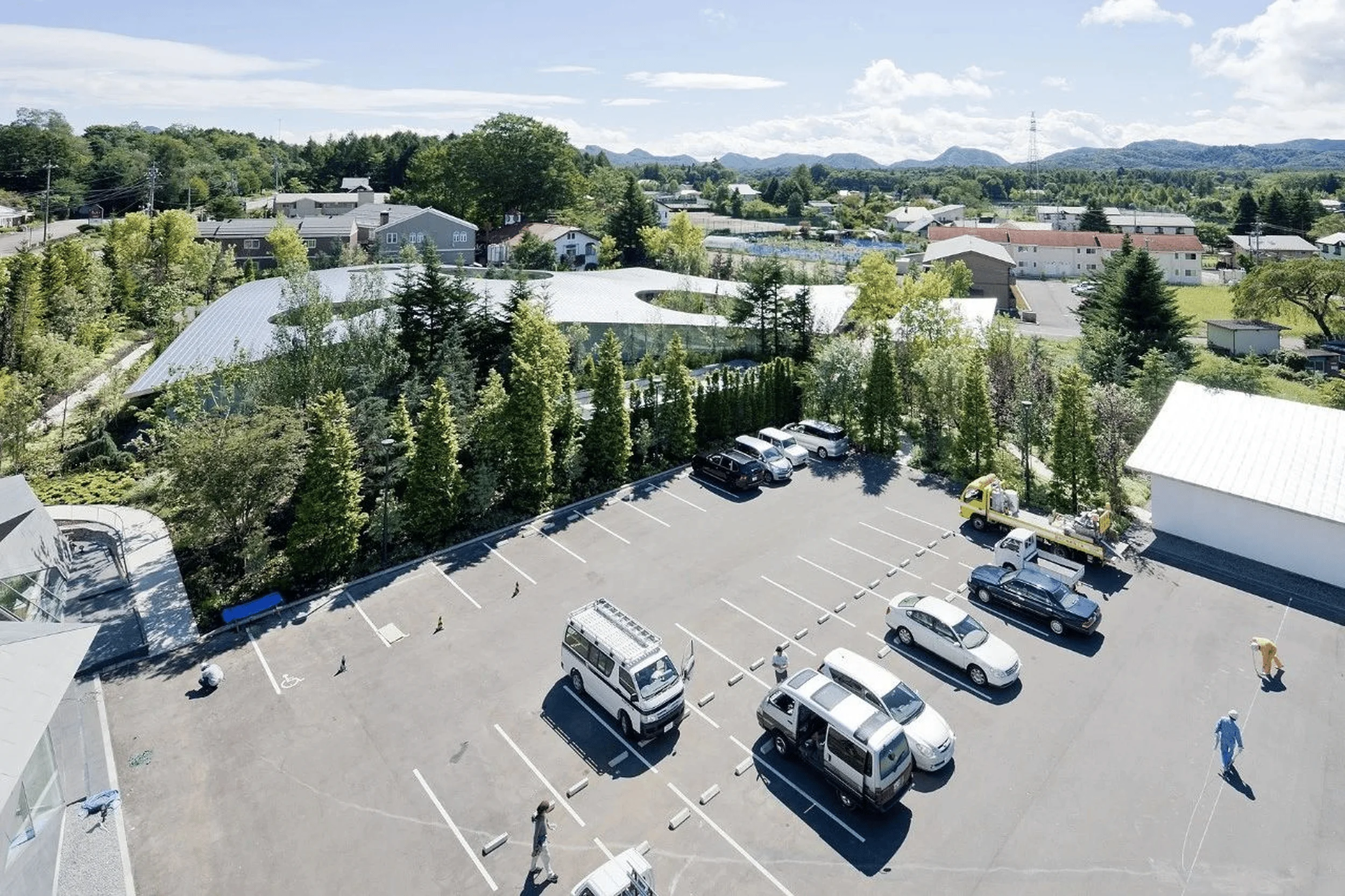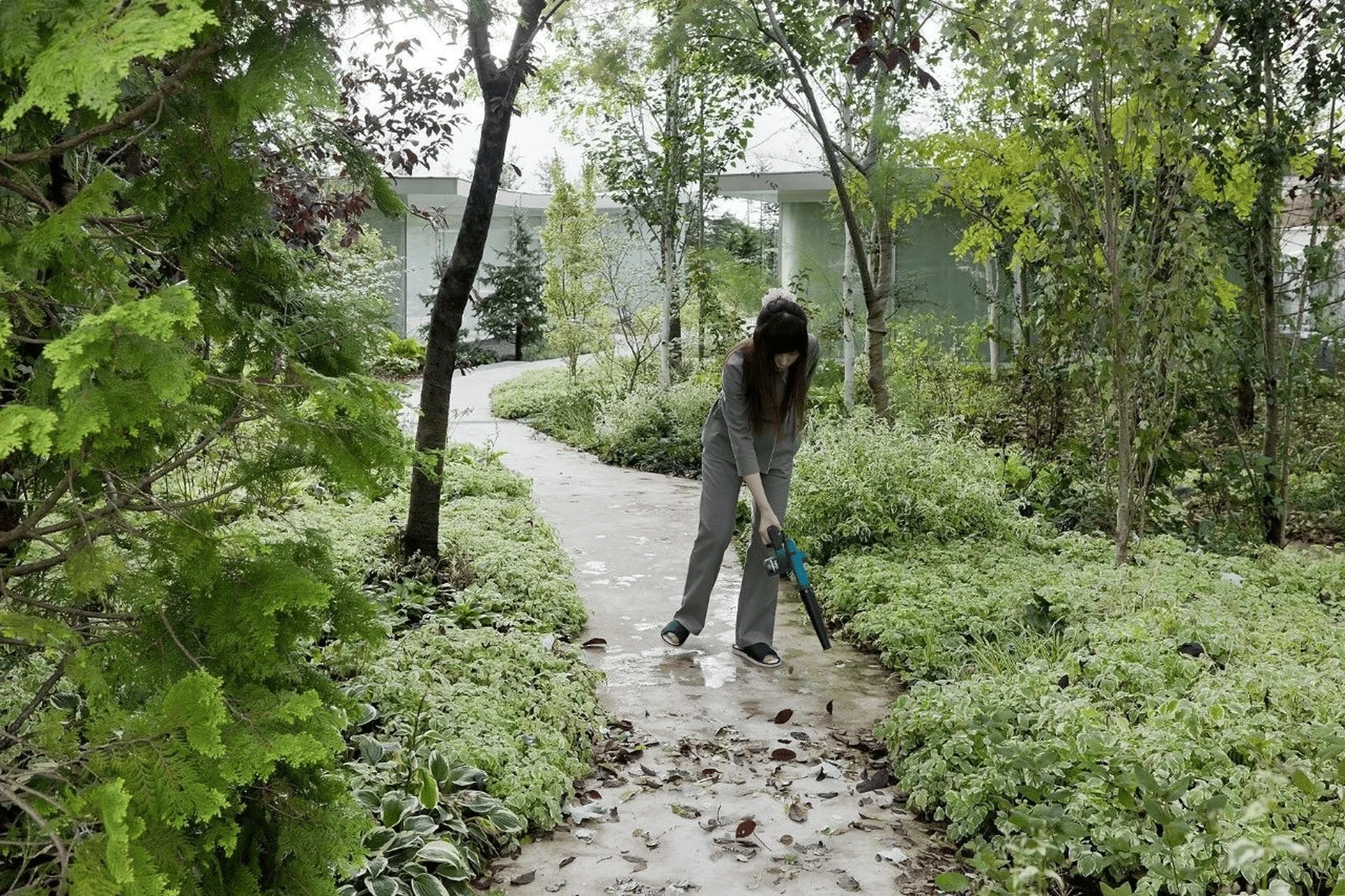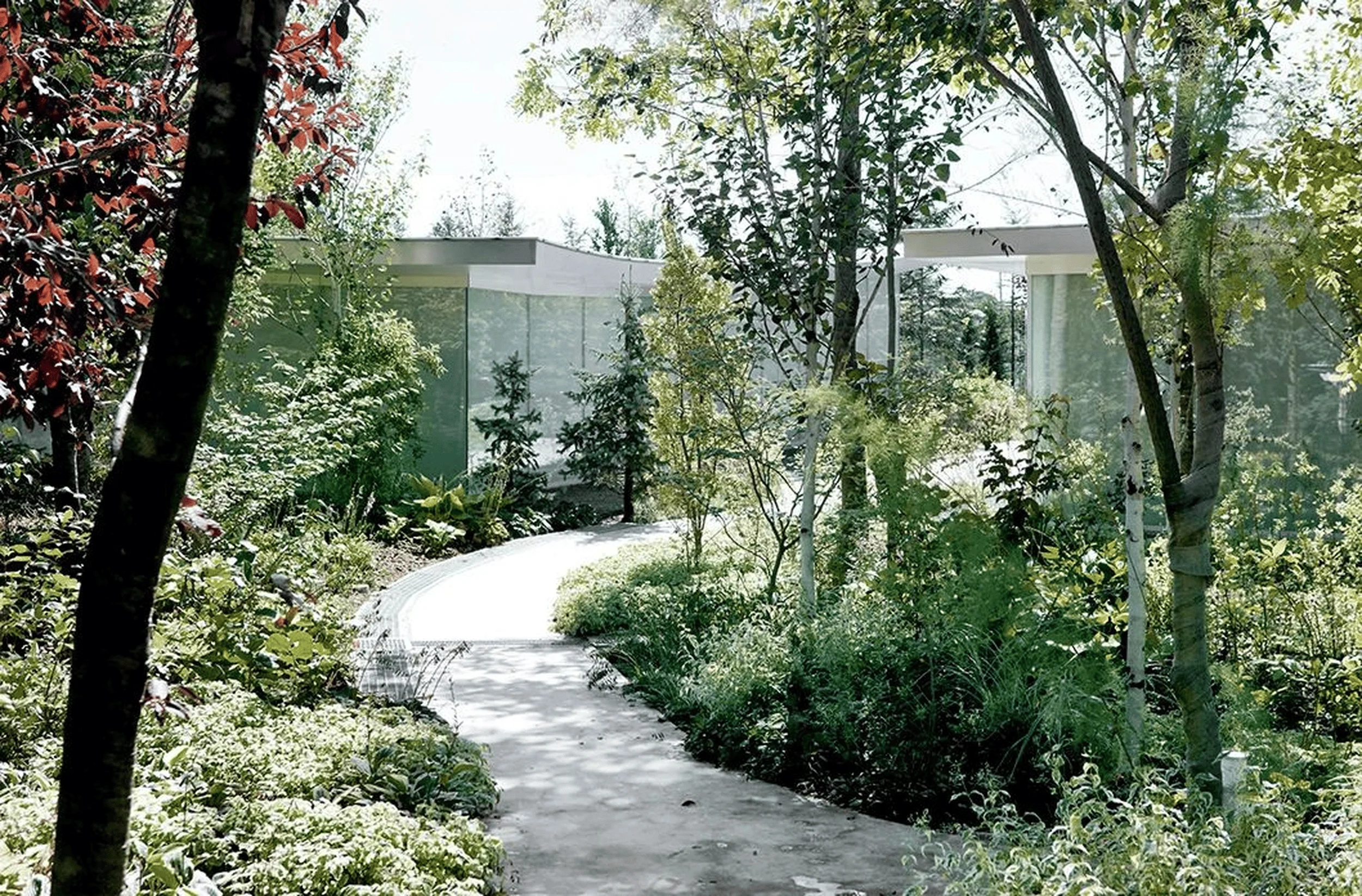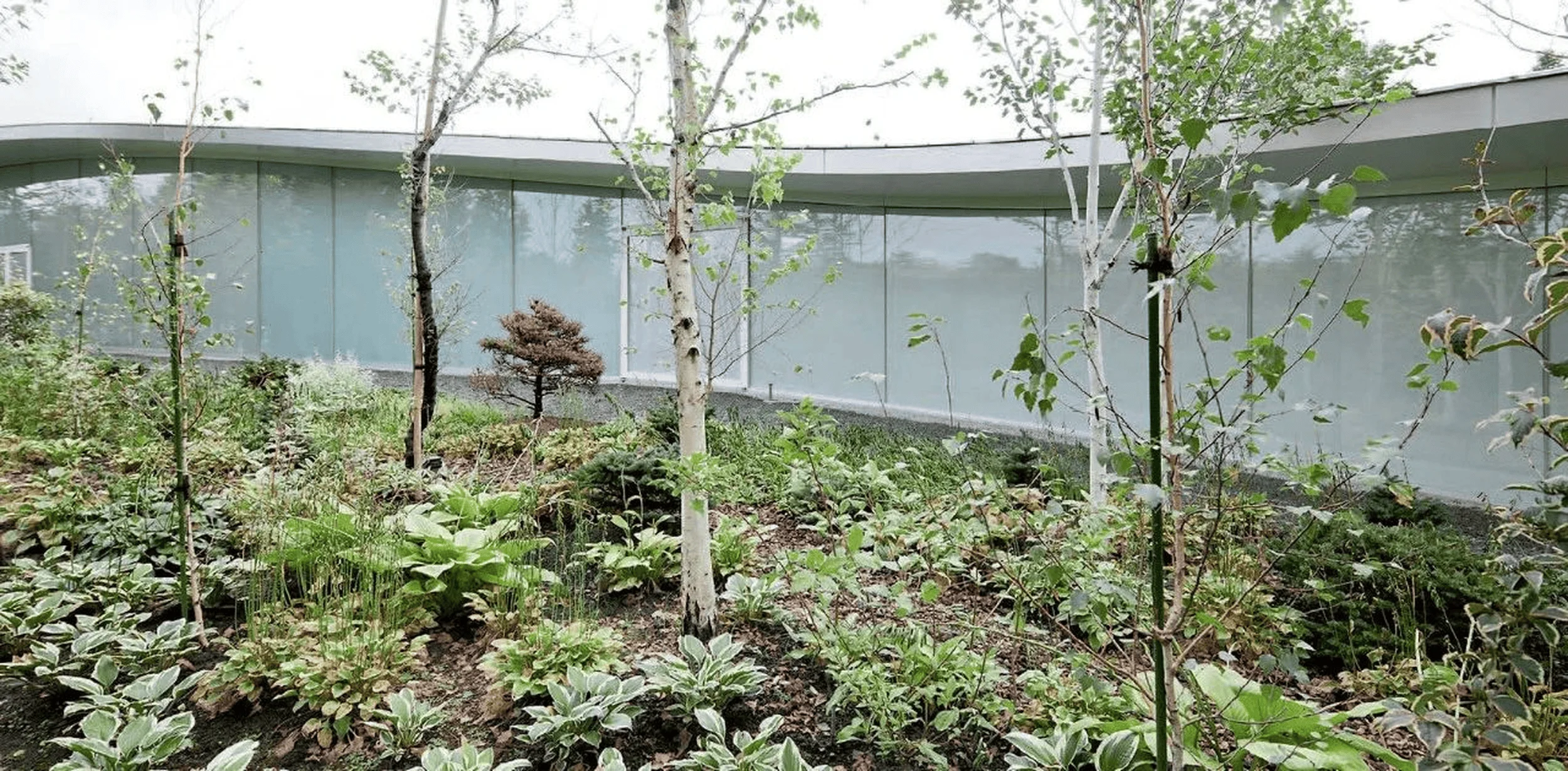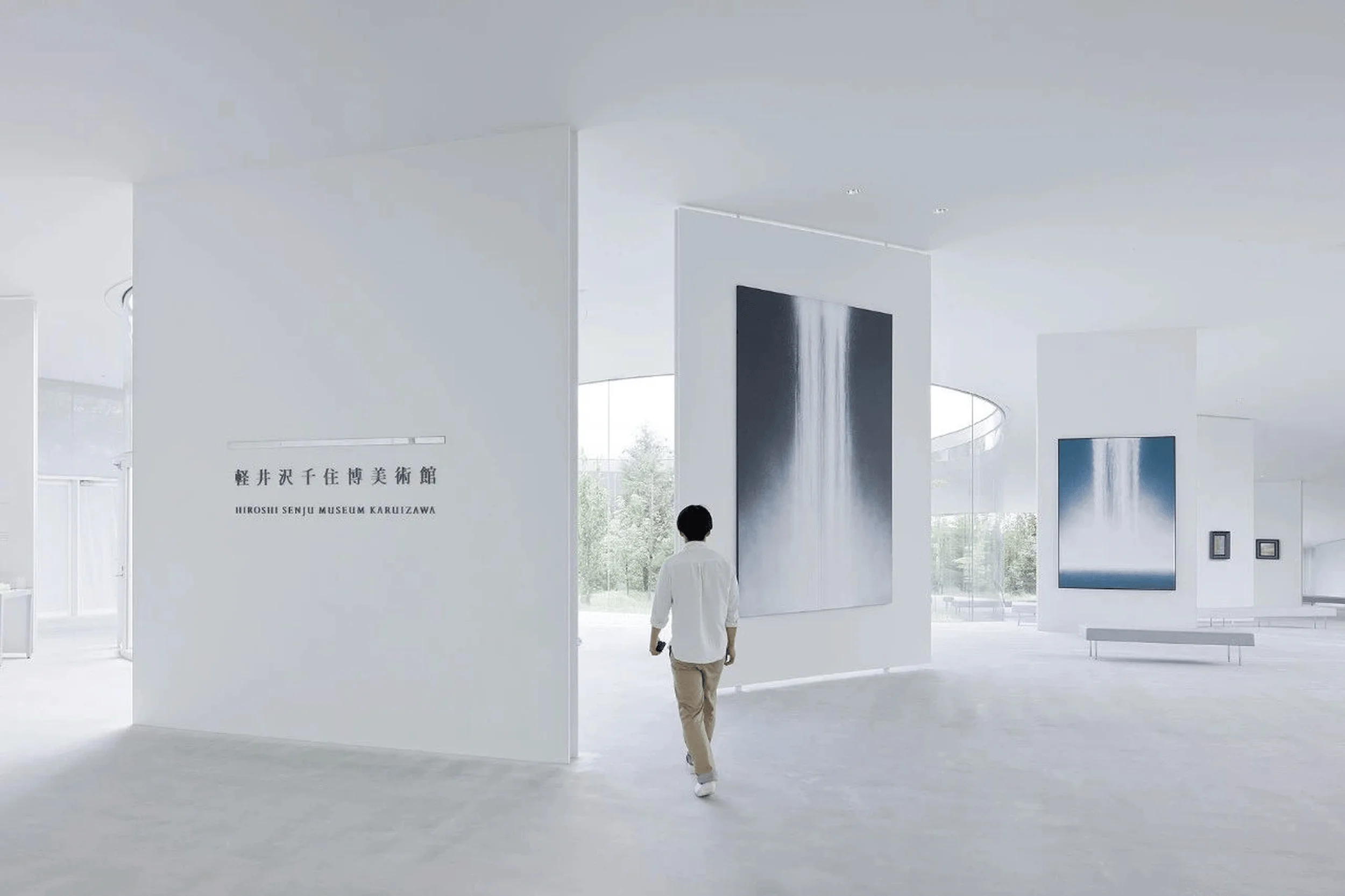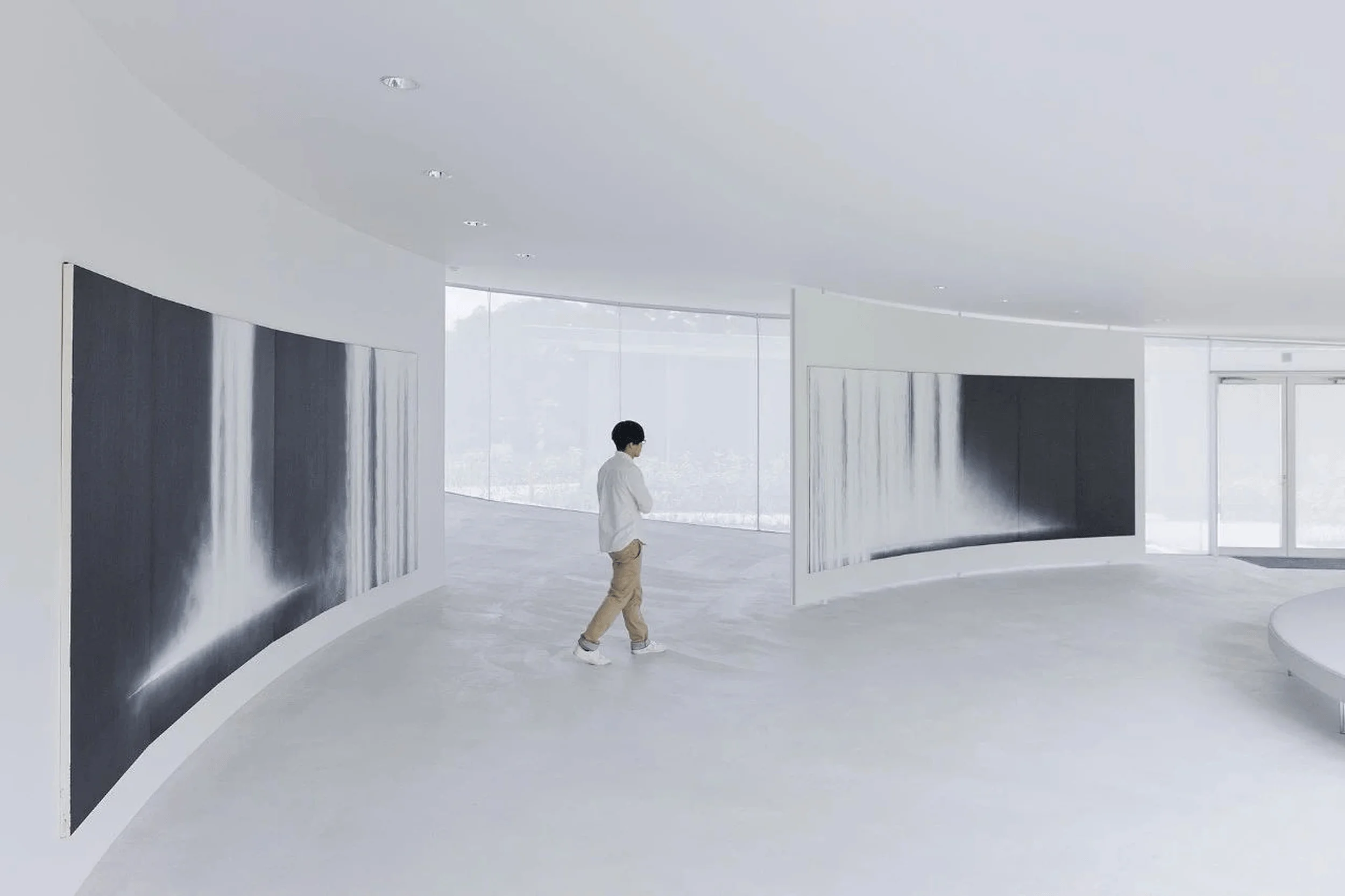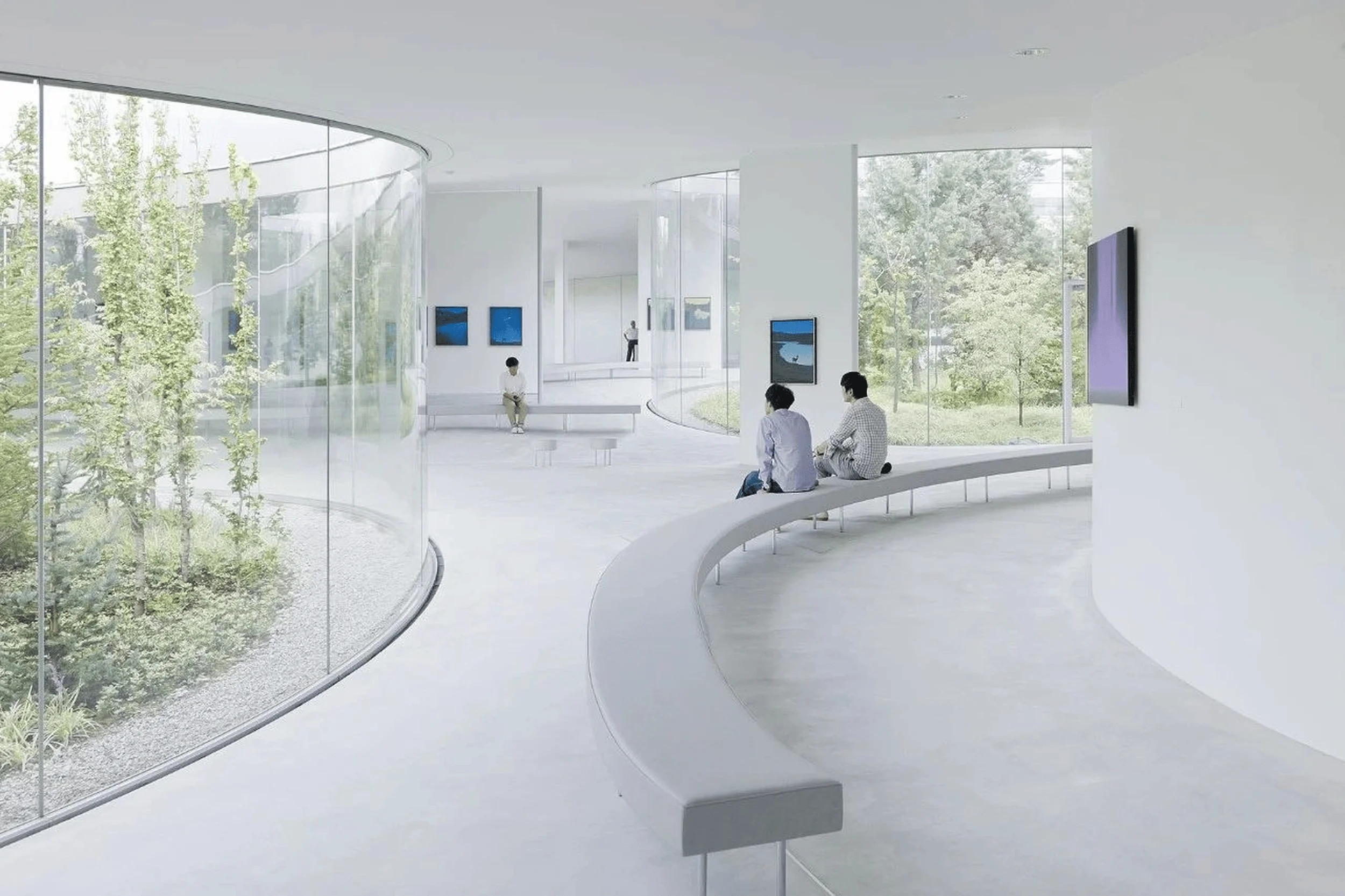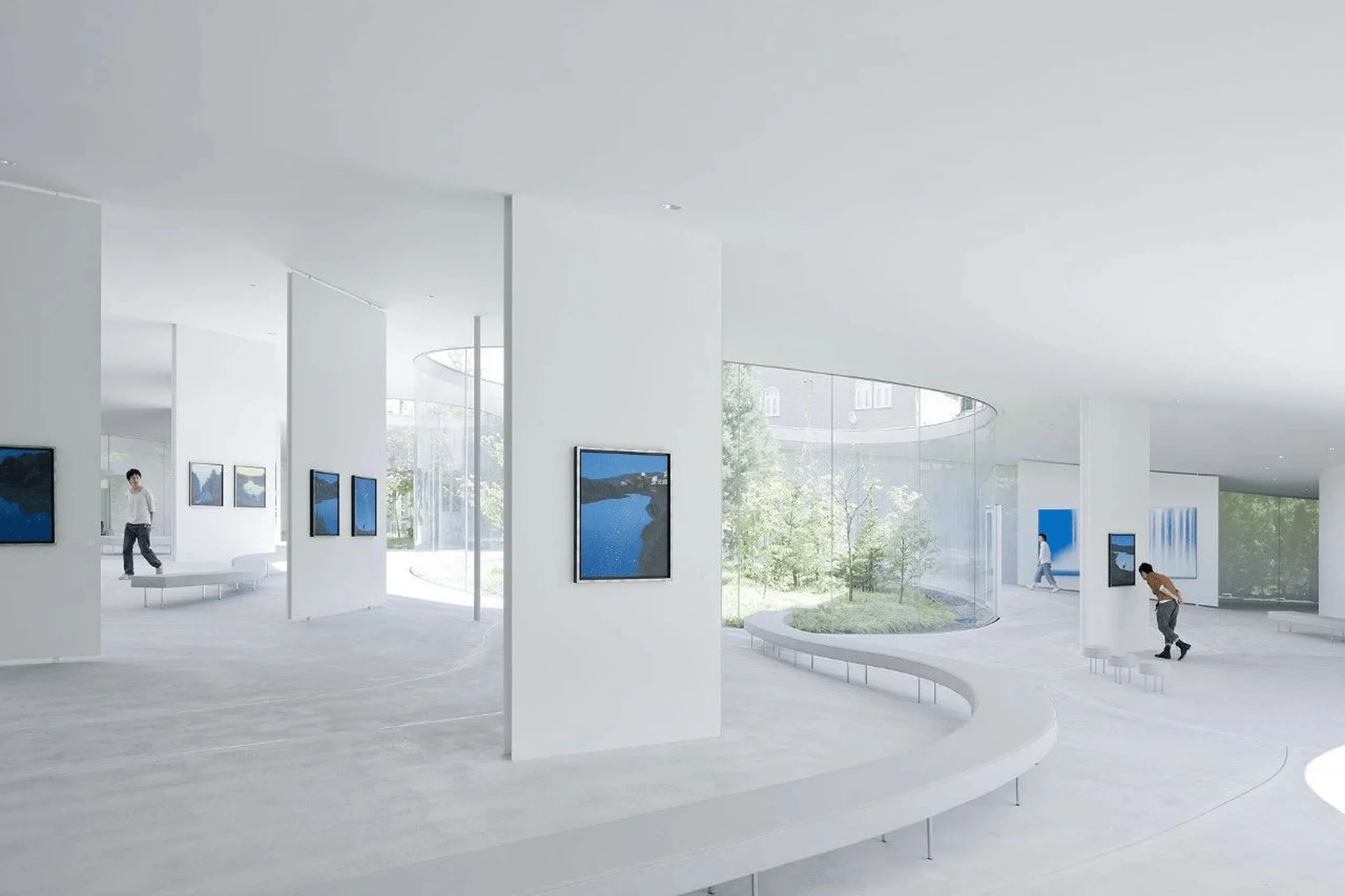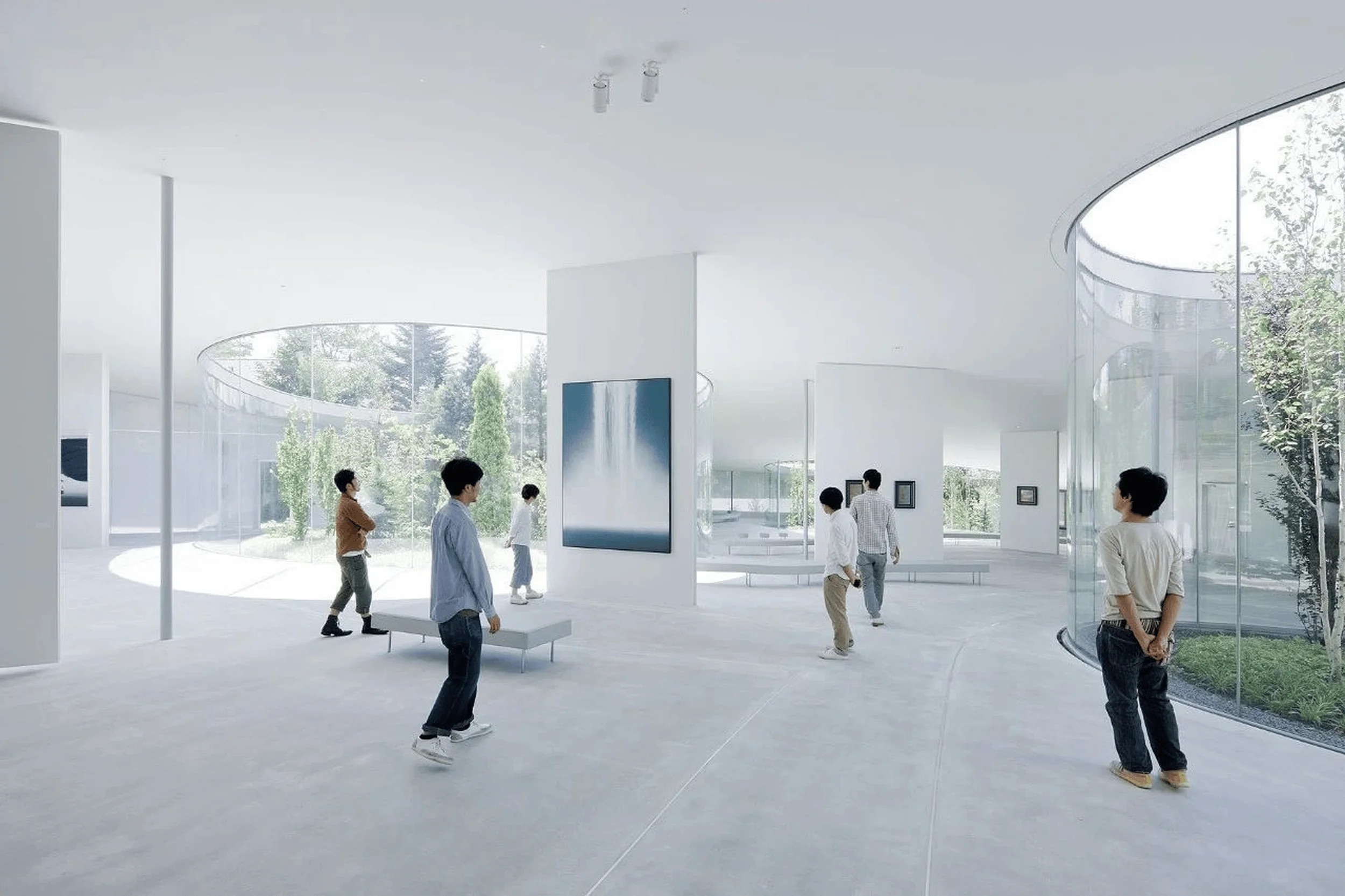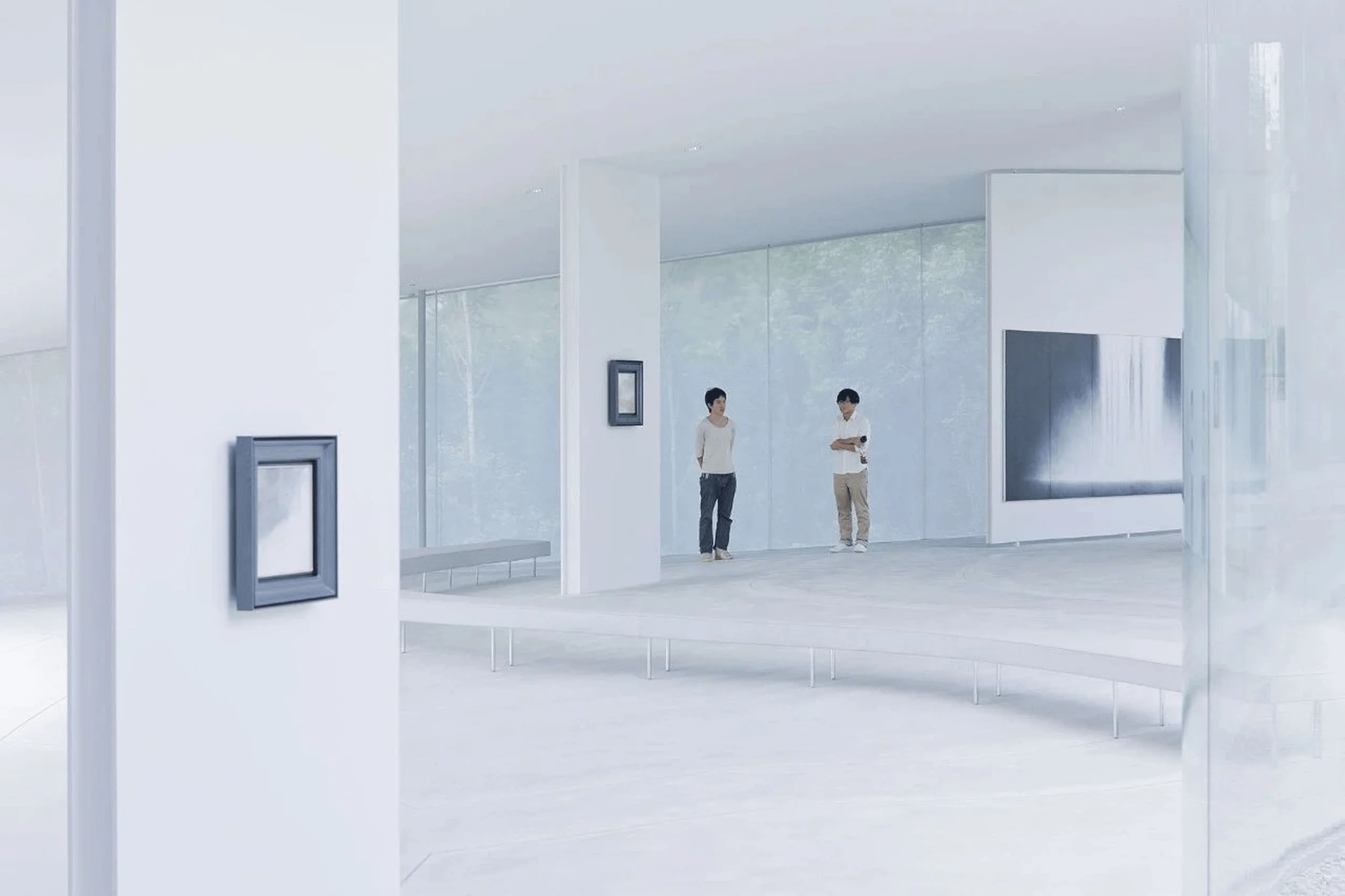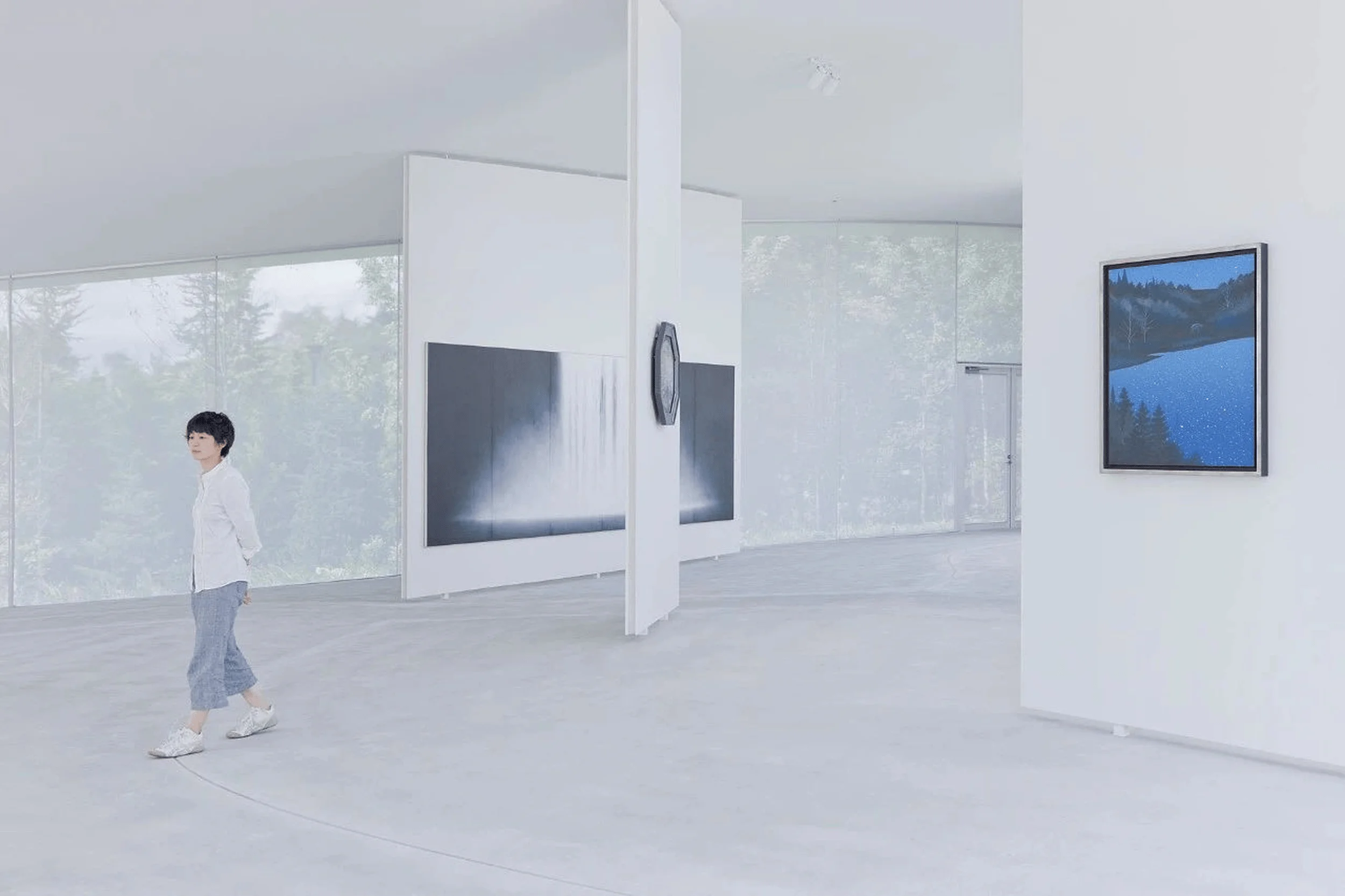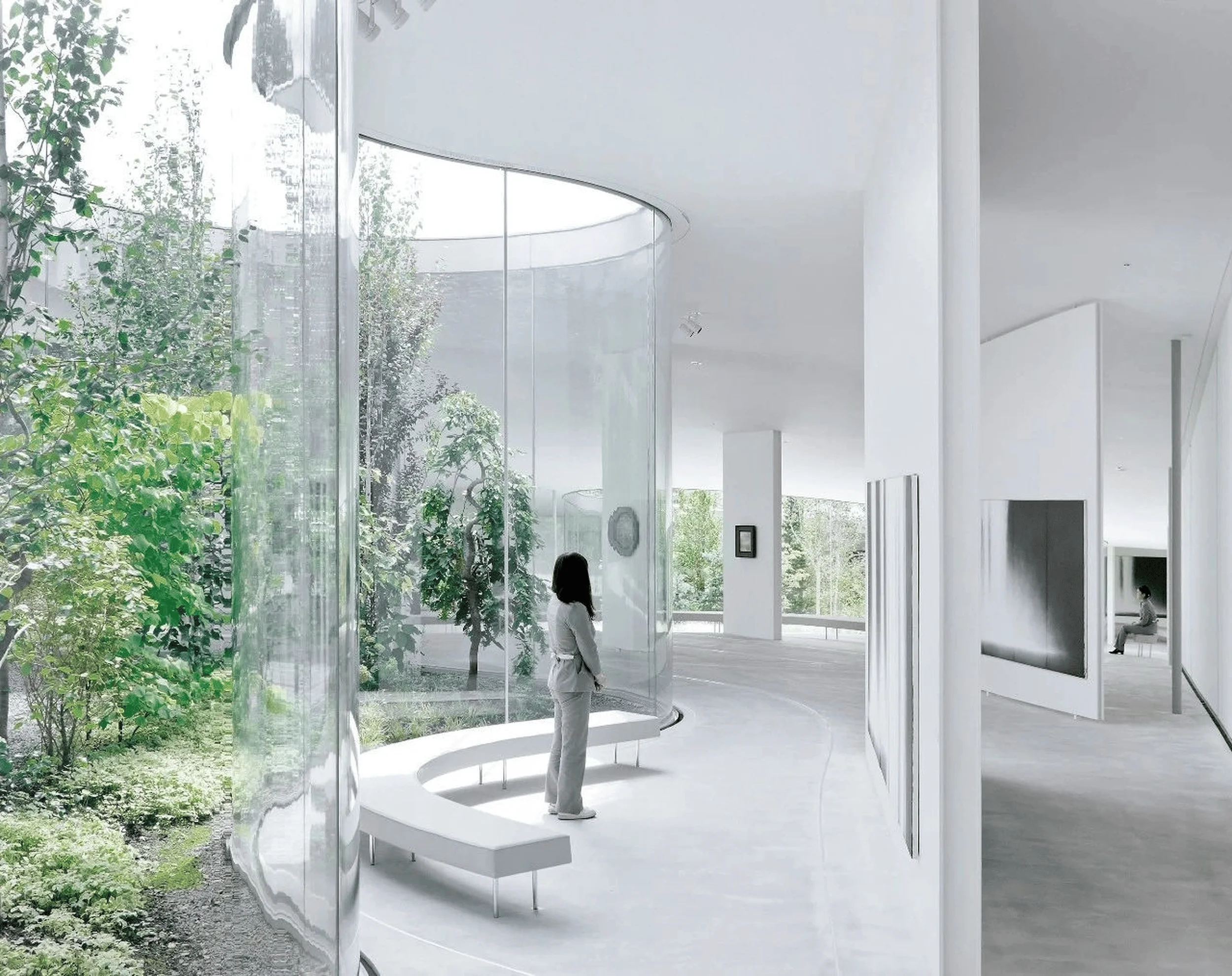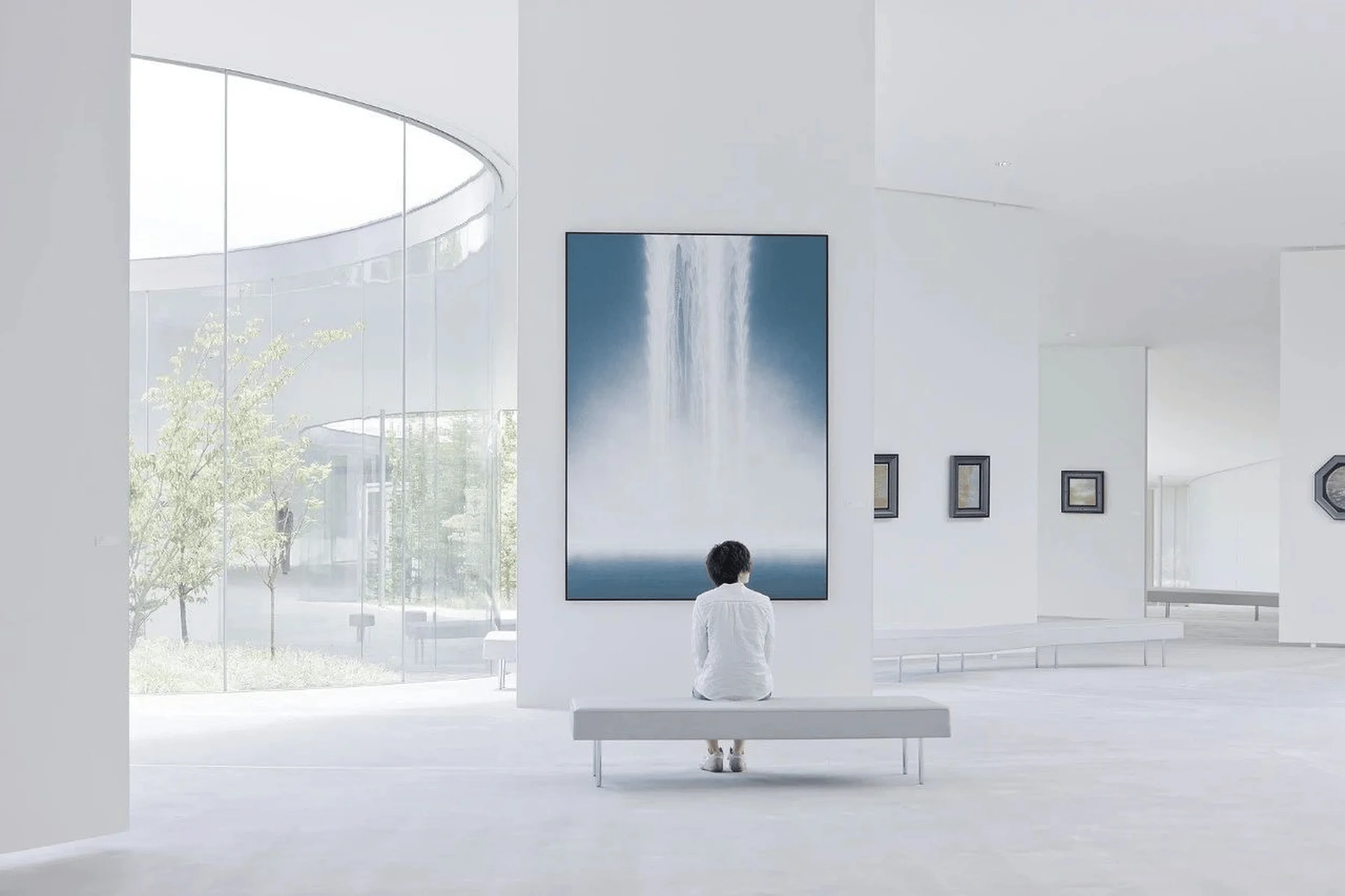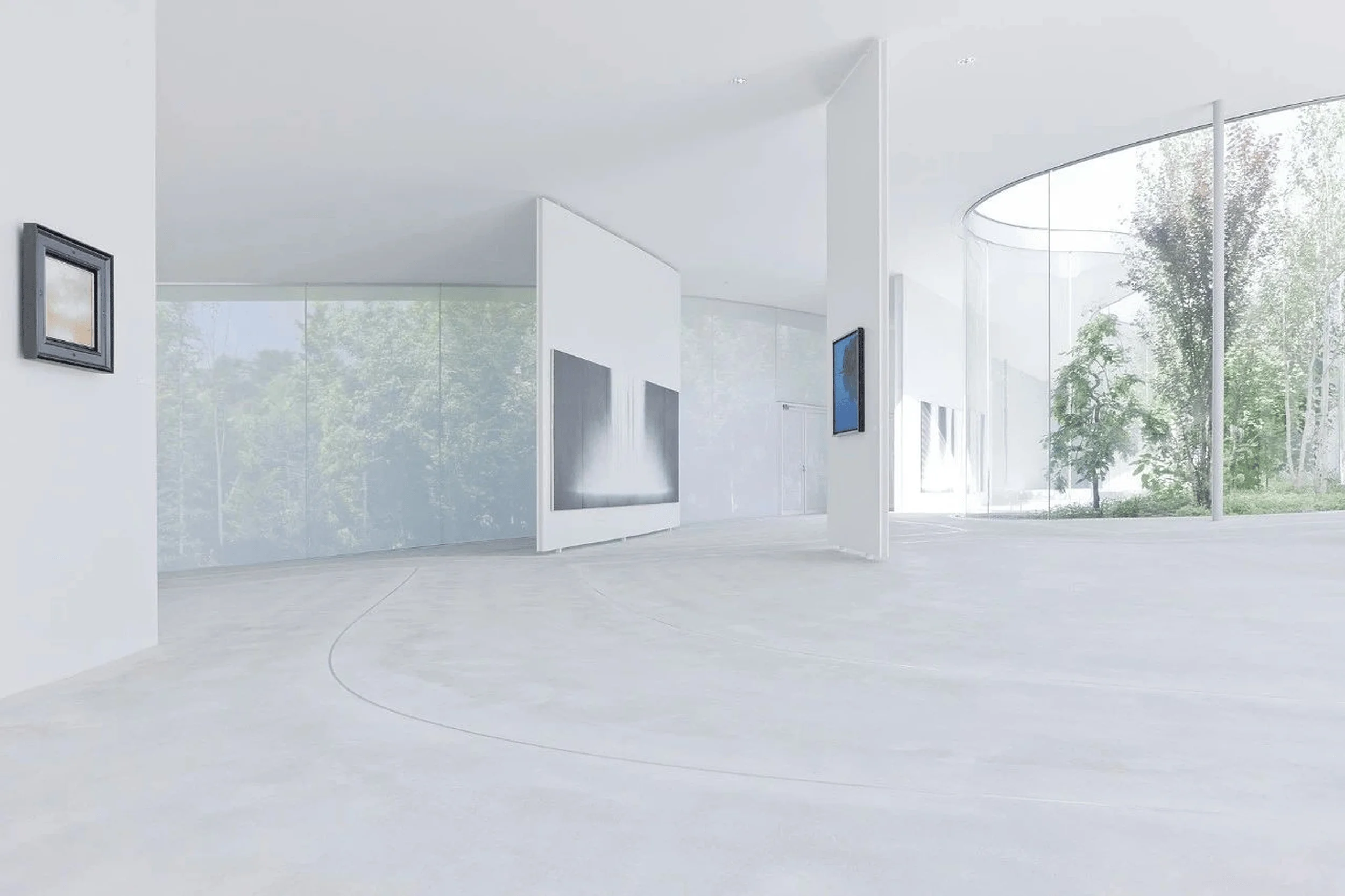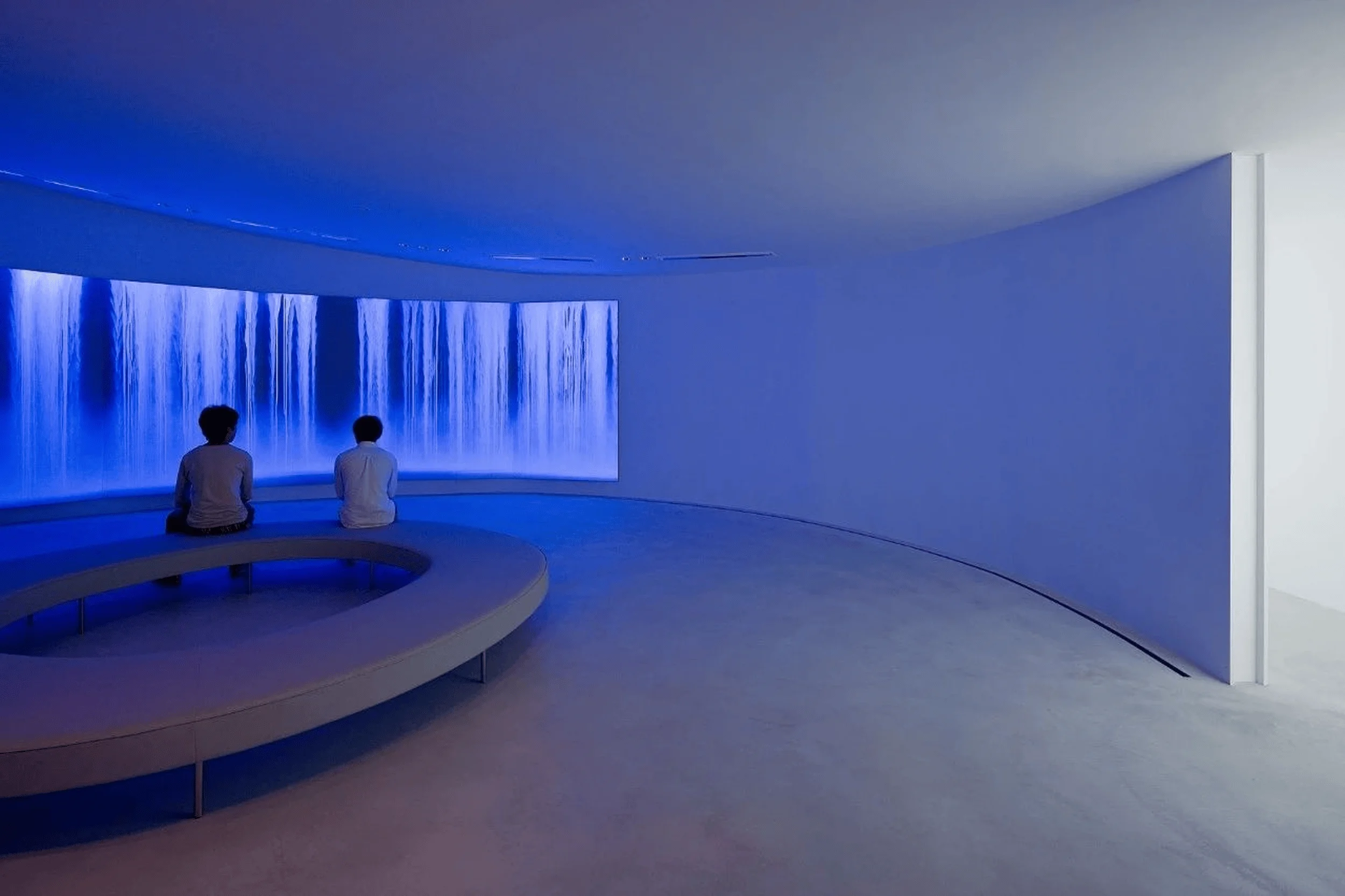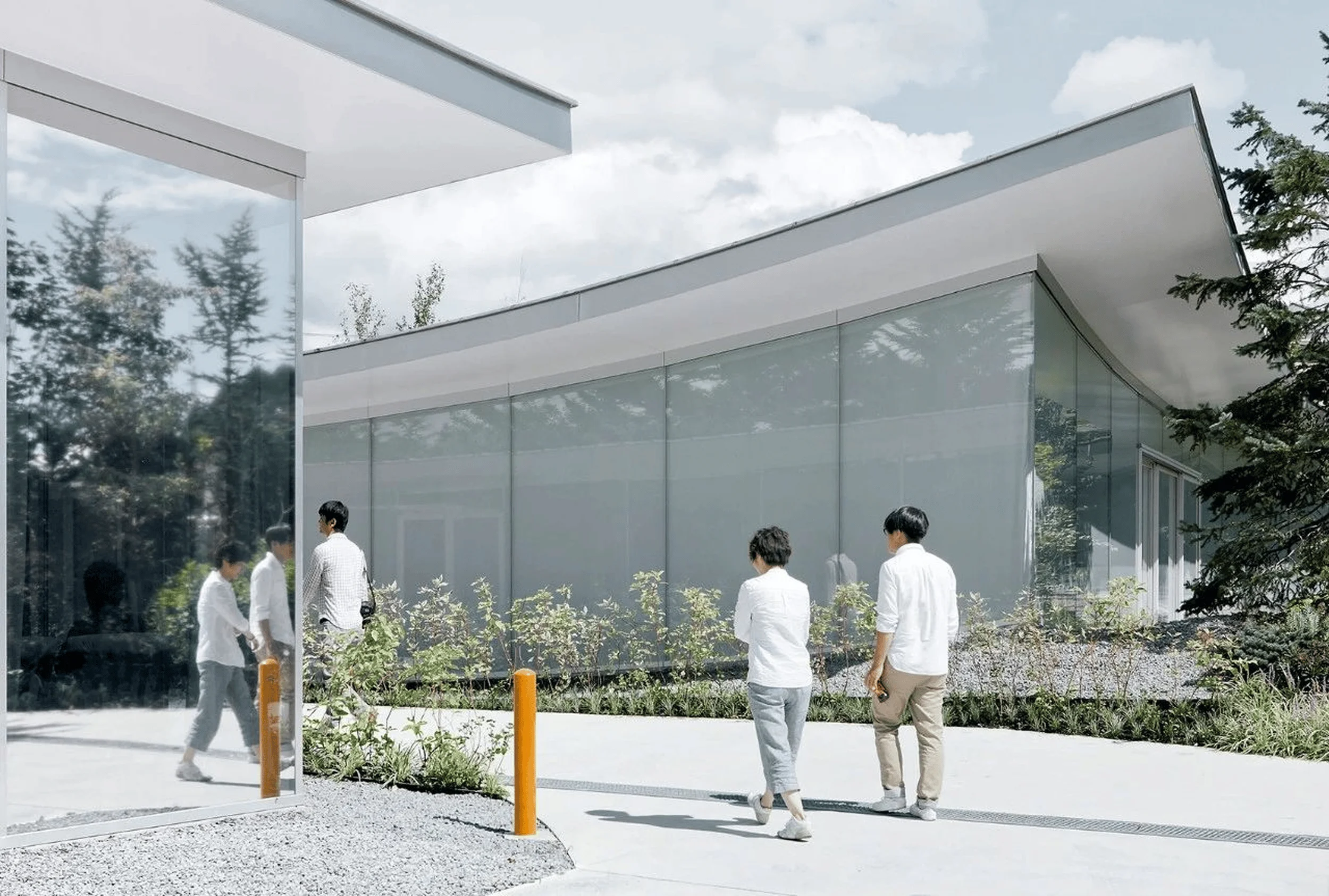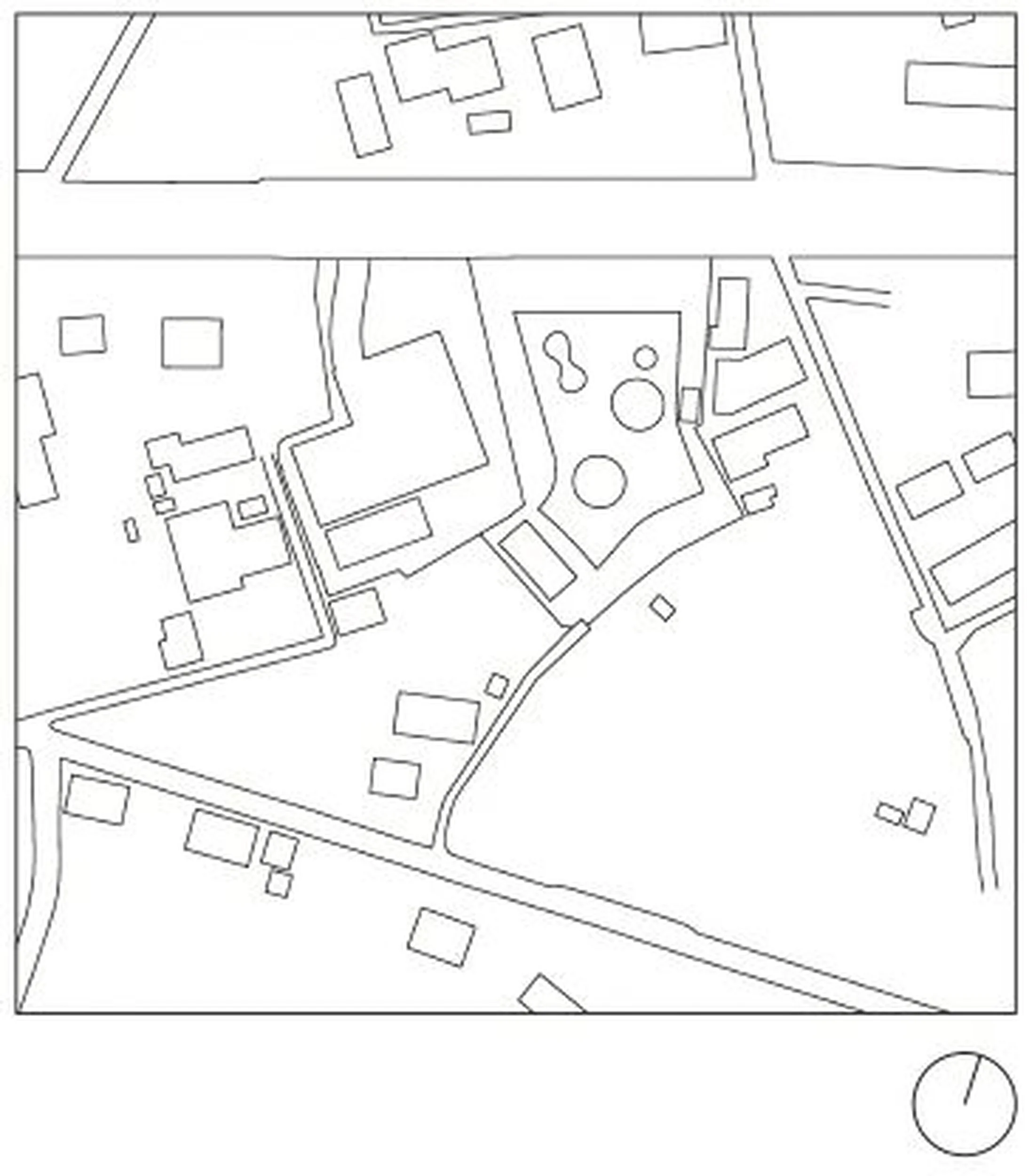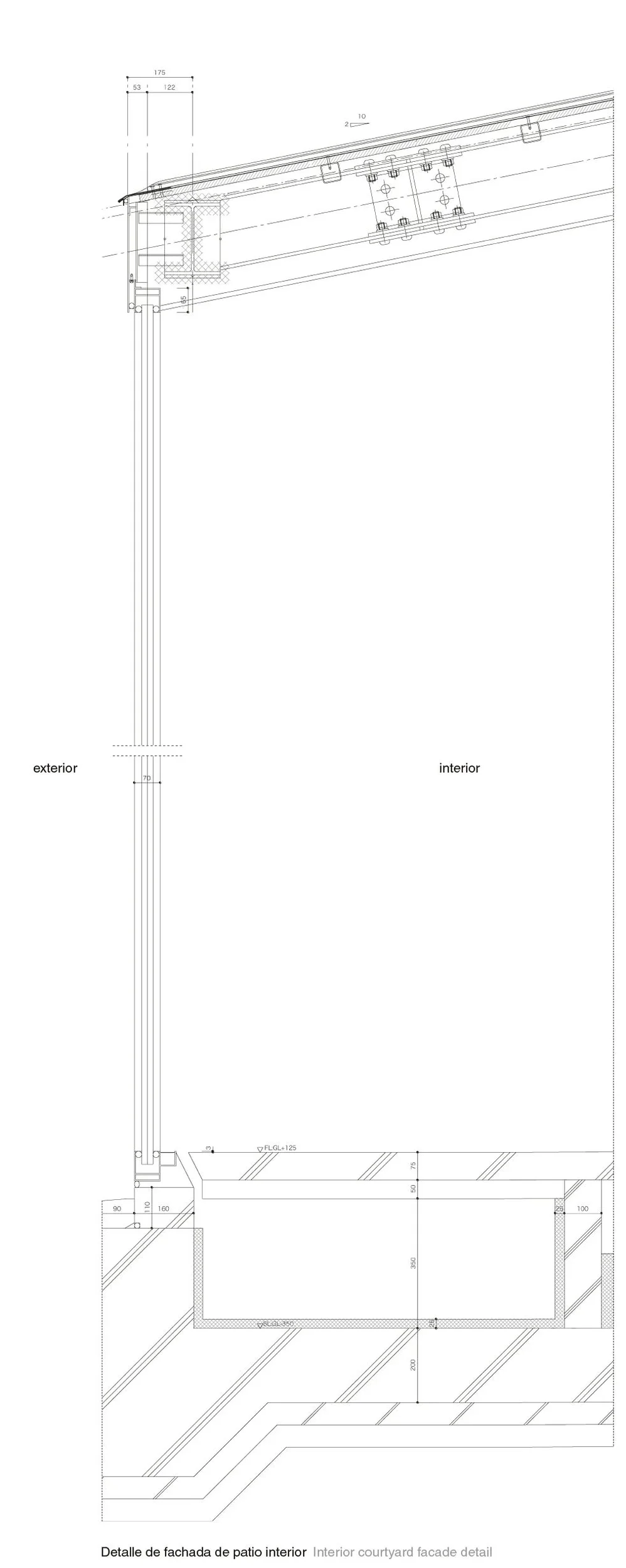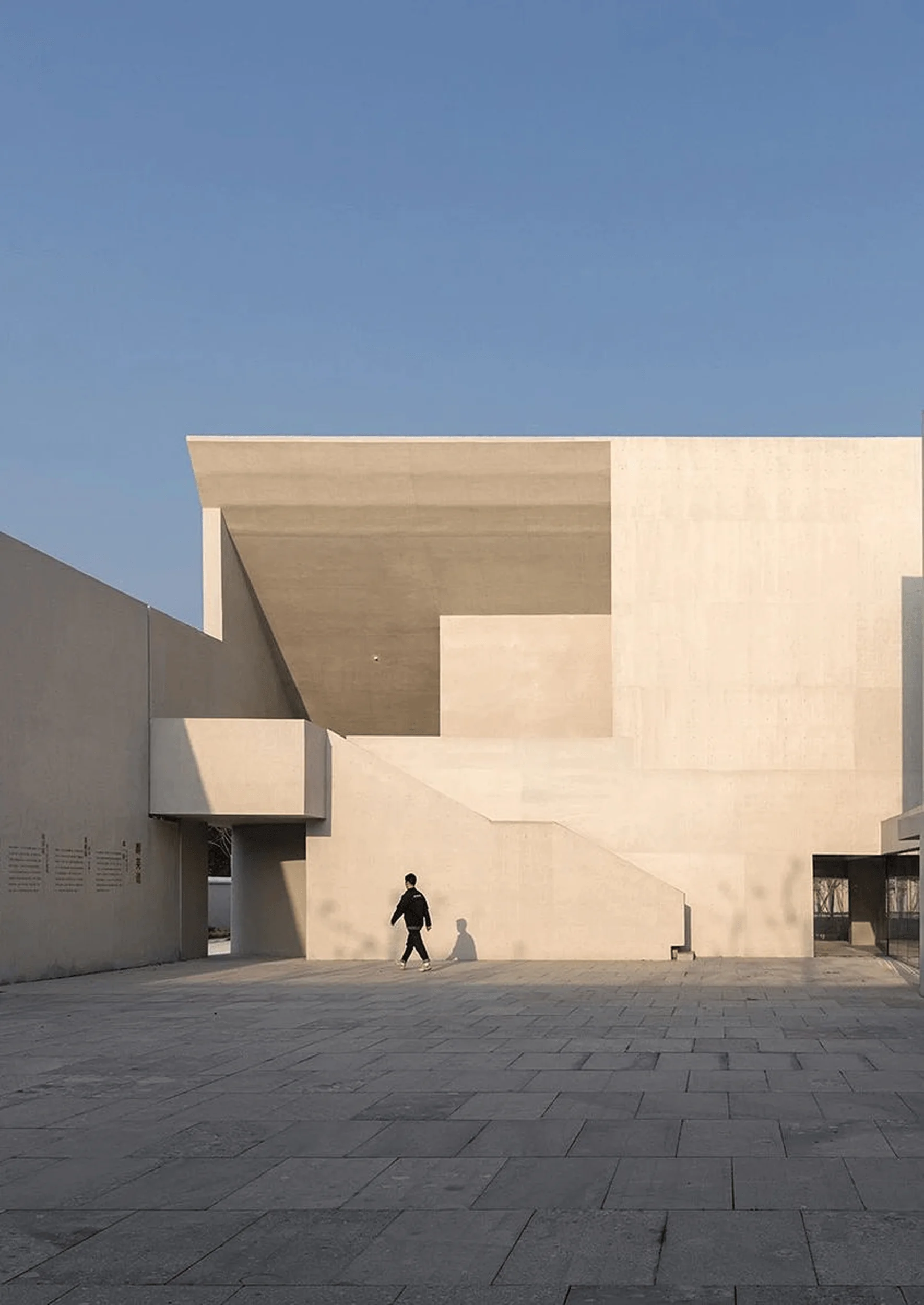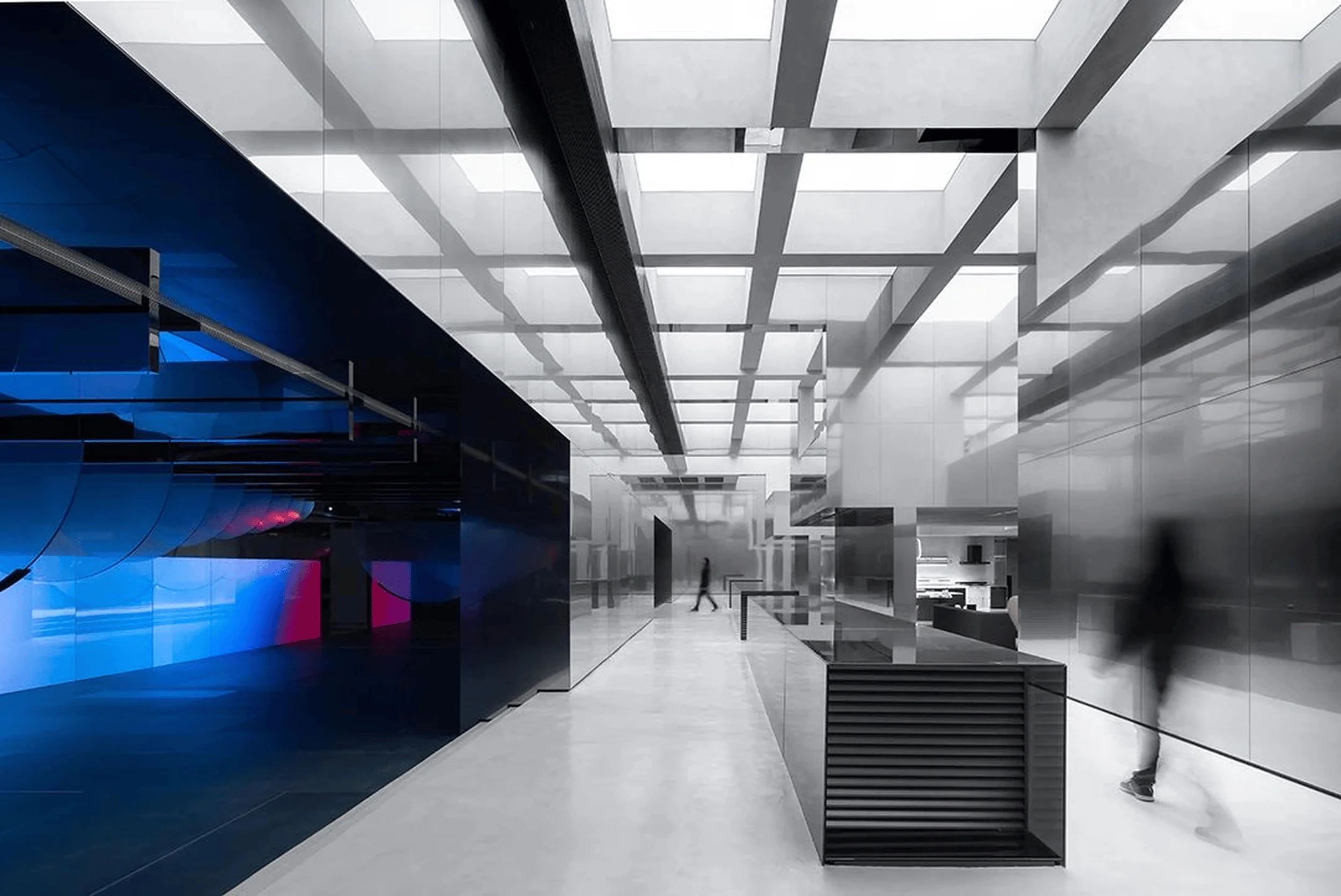The Hiroshi Senju Museum Karuizawa seamlessly blends art, architecture, and nature, creating an immersive experience for visitors.
Contents
Project Background
The Hiroshi Senju Museum Karuizawa, completed in 2011, is situated in Karuizawa, Japan, a renowned resort town nestled in the mountains of Nagano prefecture. The museum is dedicated to showcasing the work of Hiroshi Senju, a celebrated Japanese painter known for his large-scale waterfall paintings. The design of the museum was conceived as a collaborative effort between Hiroshi Senju and the award-winning architectural firm SANAA, led by Kazuyo Sejima and Ryue Nishizawa. The museum’s minimalist design principles, seamlessly integrated with the surrounding natural environment, provide a unique setting for experiencing Senju’s captivating artwork, creating a harmonious blend of art, architecture, and nature, embodying the principles of contemporary museum design. Hiroshi Senju Museum Karuizawa stands as a testament to the harmonious integration of art, nature, and architecture.
Design Concept and Objectives
Inspired by the interplay of nature and culture often explored in Senju’s artwork, SANAA’s design for the museum seeks to create a space where art and nature intertwine. The architects envisioned a museum that would serve as a canvas for the surrounding landscape, blurring the boundaries between the built environment and the natural world. The museum’s design objectives included maximizing natural light, integrating the surrounding greenery into the interior spaces, and creating a seamless flow between the exhibition areas and the surrounding gardens. The minimalist aesthetic of the museum, characterized by its clean lines, white surfaces, and extensive use of glass, further enhances the connection between art and nature, creating a serene and contemplative environment for visitors to engage with Senju’s work. Hiroshi Senju Museum Karuizawa stands as a testament to the harmonious integration of art, nature, and architecture.
Functional Layout and Spatial Planning
The Hiroshi Senju Museum Karuizawa features a single-story, free-flowing layout that encourages exploration and discovery. The museum’s interior spaces are organized around a series of interconnected courtyards, allowing visitors to seamlessly transition between the reception area, exhibition galleries, cafe, and central atrium. The galleries are designed to showcase Senju’s large-scale waterfall paintings, providing ample space for viewers to appreciate the intricate details and immersive quality of his work. The museum’s spatial planning is further enhanced by the integration of the surrounding gardens, which are visible from various points within the museum, blurring the boundaries between inside and outside, creating a sense of continuity between the art, architecture, and the surrounding natural environment, embodying the principles of contemporary museum design. Hiroshi Senju Museum Karuizawa stands as a testament to the harmonious integration of art, nature, and architecture.
Exterior Design and Aesthetics
The museum’s exterior design is characterized by its minimalist aesthetic and its harmonious integration with the surrounding landscape. The building’s low-lying, undulating roofline mimics the gentle slopes of the site, creating a sense of visual continuity between the architecture and the natural topography. The exterior walls are primarily clad in glass, allowing natural light to flood the interior spaces and providing panoramic views of the surrounding gardens. The use of glass also creates a sense of transparency, blurring the boundaries between the museum and its environment, allowing visitors to feel connected to the natural beauty of Karuizawa. The minimalist design principles, seamlessly integrated with the surrounding natural environment, provide a unique setting for experiencing Senju’s captivating artwork, creating a harmonious blend of art, architecture, and nature, embodying the principles of contemporary museum design. Hiroshi Senju Museum Karuizawa stands as a testament to the harmonious integration of art, nature, and architecture.
Technical Details and Sustainability
The Hiroshi Senju Museum Karuizawa incorporates various technical details and sustainable design strategies to enhance its functionality and minimize its environmental impact. The museum’s extensive use of glass maximizes natural light, reducing the need for artificial lighting during the day. The glass walls are also treated with a UV protective coating, minimizing heat gain and reducing energy consumption. The museum’s roof is designed to collect rainwater, which is then used for irrigation and other non-potable water needs. These sustainable features demonstrate the museum’s commitment to environmental responsibility and its integration with the natural environment. The minimalist design principles, seamlessly integrated with the surrounding natural environment, provide a unique setting for experiencing Senju’s captivating artwork, creating a harmonious blend of art, architecture, and nature, embodying the principles of contemporary museum design. Hiroshi Senju Museum Karuizawa stands as a testament to the harmonious integration of art, nature, and architecture.
Social and Cultural Impact
The Hiroshi Senju Museum Karuizawa has had a significant social and cultural impact on the local community and beyond. The museum has become a popular destination for art enthusiasts, nature lovers, and architecture aficionados, attracting visitors from all over Japan and around the world. The museum’s unique design and its integration with the surrounding landscape have also garnered critical acclaim, solidifying its status as an architectural landmark. The museum’s presence in Karuizawa has contributed to the town’s cultural vibrancy and its reputation as a center for art and nature. The minimalist design principles, seamlessly integrated with the surrounding natural environment, provide a unique setting for experiencing Senju’s captivating artwork, creating a harmonious blend of art, architecture, and nature, embodying the principles of contemporary museum design. Hiroshi Senju Museum Karuizawa stands as a testament to the harmonious integration of art, nature, and architecture.
Project Information:
Project type: Art Museum
Architect: SANAA
Project Year: 2011
Location: Japan
Photographer: Iwan Baan


